Adapting Stephen King's Cujo: Does The 1983 Classic Meet Its Full Horror Potential?
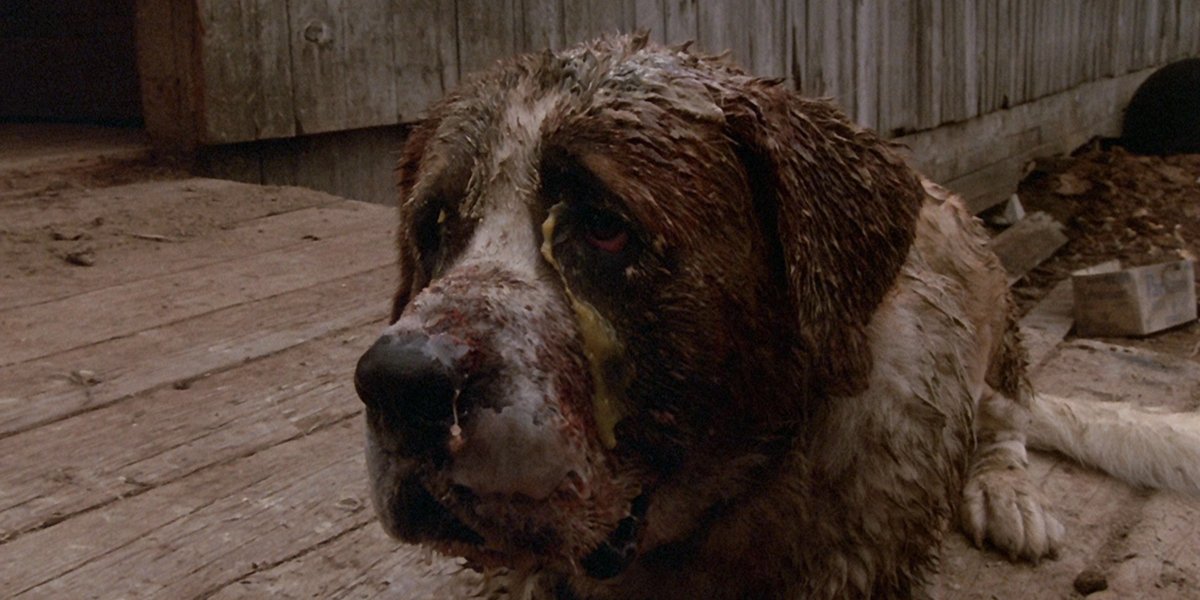
Before 1981, St. Bernards would not have ranked high on a list of canine breeds perceived as dangerous. They are certainly intimidating proportionally, weighing up to 180 pounds, but their reputation for centuries had been as gentle giants – historically known for performing rescue missions searching for lost hikers in the Alps. The stories about them wearing casks filled with brandy around their neck are spurious, but they typically fit the loving brand of “good dog.”
Then Stephen King came along with Cujo and changed everything. As the author has done many times throughout his career, he took something safe and ordinary and turned it into something horrific. While Cujo was always a loving and faithful pet – a detail emphasized in the novel’s postscript – a bite on the nose from a rabid bat transforms him into a chaotic beast, and ultimately the mindless terror at the center of what remains one of King’s most shocking works.
In translating the book for the big screen, director Lewis Teague took on one hell of a challenge, and not just because of the inherent issues that come with making a live-action movie where an animal takes center stage. The feature was released in 1983 and proved to be a modest success – but 38 years later, how does it and its treatment of the source material hold up? That’s the subject at hand in this week’s edition of Adapting Stephen King.
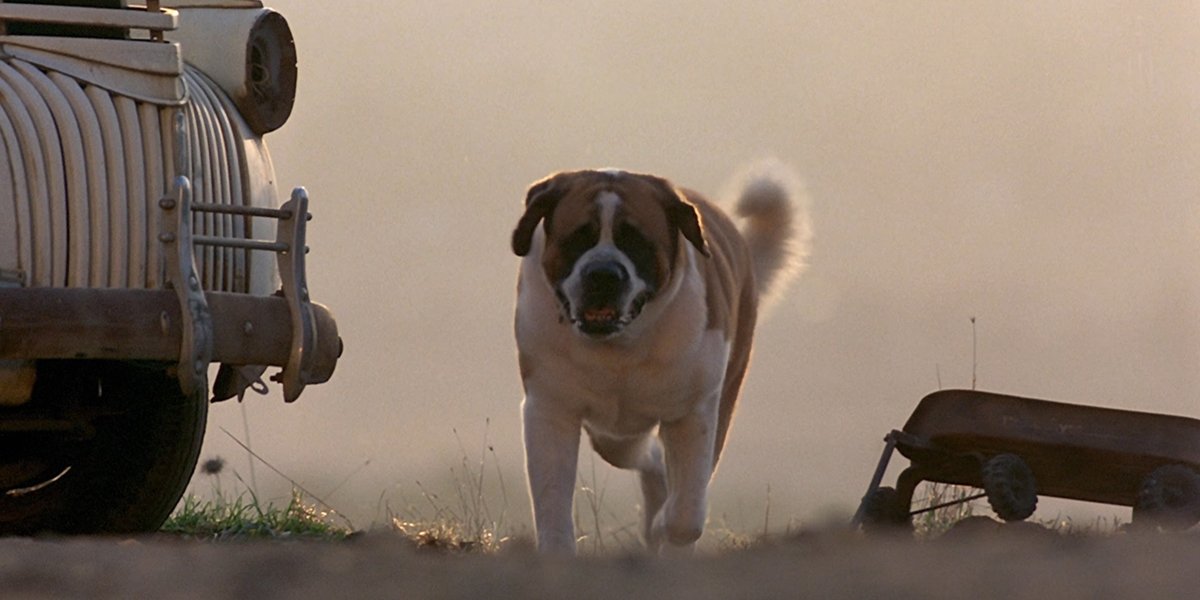
What Cujo Is About
Cujo is unequivocally one of Stephen King’s darkest stories, as while the dog has the diseased mind and flesh-ripping fangs, it’s a cruel universe that is the novel’s true villain. A blend of human flaws, random chance, and awful coincidence orchestrate perilous circumstance that lead to pain and tragedy, and all of it is wrapped into a textbook high concept plot.
The idea first started taking shape about four years before the book was published, with Stephen King taking a memorable ride out on his motorcycle to a mechanic “in the middle of nowhere” outside Bridgton, Maine. It was there that he encountered a not-so-friendly Saint Bernard who, despite the owner of the establishment saying he wouldn’t, tried to give King’s hand a chomp when the author reached out to pet it. As the experience ruminated in his mind, he also began imaging a story akin to an old ABC Movie Of The Week – one that would be a single scene extended to feature length – and while the final version added more complexity to the narrative, the core concept was born.
Bringing audiences back to the town of Castle Rock, Maine following its debut appearance in the 1979 novel The Dead Zone, Cujo introduces Constant Readers to the Trenton family – Donna, Vic, and their son Tad – as they face crises of both the internal and external variety. Privately, Donna has been carrying on an affair with a man named Steve Kemp, which she decides to call off and tell her husband about; and professionally Vic finds the status of his advertising career in jeopardy when a cereal brand he has as an account with begins making kids puke up red vomit that looks like blood.
When Vic has to travel with his business partner to New York, Donna agrees to take their malfunctioning Ford Pinto in for repairs – going to visit a garage on the outskirts of town owned by a man named Joe Camber. What she has no way of knowing, though, is that the Camber family dog, Cujo, has contracted rabies, and after the beginnings of a violent rampage is left lying in wait for Donna and Tad to arrive and for their car to break down at what turns out to be the worst possible time.
Your Daily Blend of Entertainment News
One of the oddest things about Cujo is that Stephen King has said that he has little recollection of actually committing the story to paper. By the late 1970s/early 1980s, the author’s issues with drugs and alcohol became extreme, evidently resulting in states of blackout. In his 2000 non-fiction book On Writing, King says that he barely remembers the novel’s creation “at all,” adding,
I don’t say that with pride or shame, only with a vague sense of sorrow and loss. I like that book. I wish I could remember enjoying the good parts as I put them down on the page.
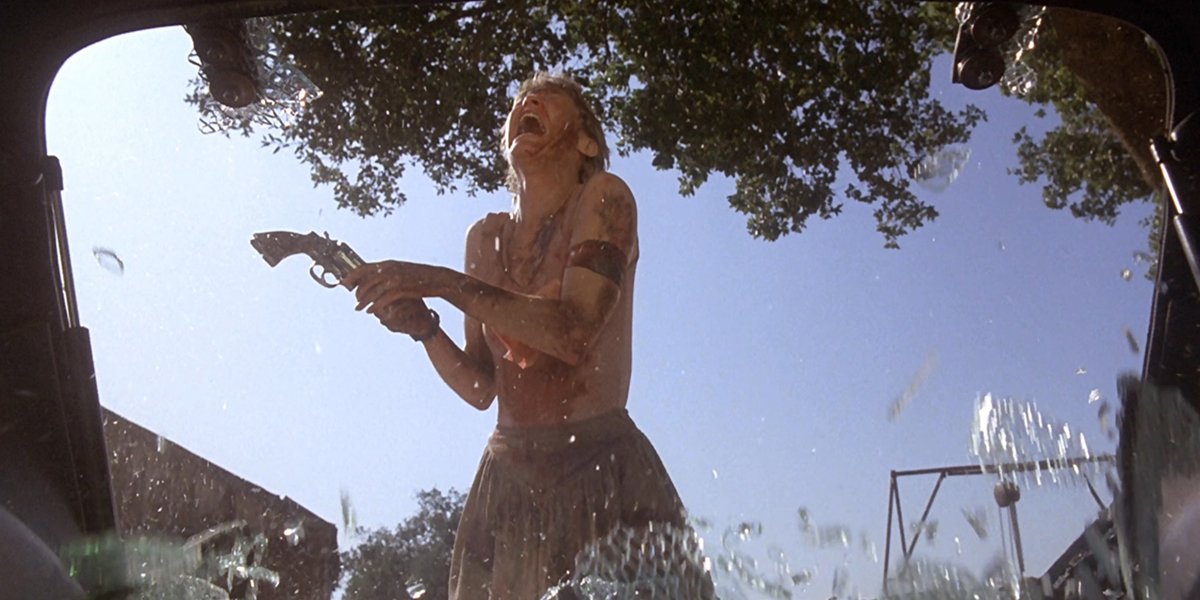
How Lewis Teague’s Cujo Differs From Stephen King’s Book
While he doesn’t receive any official credit for his work, Stephen King himself penned the first draft of the screenplay for Cujo’s film adaptation, though ironically part of the reason why another writer was brought in was because King’s take veered too far away from the source material. Ultimately the movie that Lewis Teague wanted to make was one that honed much closer to the book, and in that mission he was very successful, but there are still some major differences to note – with the way that the film version ends being the most significant.
As alluded to above, one aspect of Stephen King’s Cujo nowhere present in the film version is the fact that it is a semi-sequel to The Dead Zone. That novel not only introduced Castle Rock to the author’s canon, but also Sheriff George Bannerman and the evil serial killer Frank Dodd – both elements that return in King’s canine-centric horror story. In the case of the latter, Lewis Teague’s adaptation skips over the suggestion at the start of the book that the same inherent evil that caused Dodd to murder several women also sees Cujo turn rabid and start his own spree of death.
In terms of the former, Bannerman still has a small supporting role in the movie, played by actor Sandy Ward, and the character plays out what is basically the same arc as is featured in the text, but it’s delivered without the context of his experience years prior working with a psychic to stop a madman.
The film version is also what could be called a more streamlined incarnation – albeit without ever sacrificing material key to the character building. For example, there are significant sections of the book that follow Joe Camber’s wife, Charity, and her son, Brett, as they get distance from the abusive patriarch of their family, and circumstances in their narrative end up serving to make Donna and Tad’s situation more dire (Brett is concerned about the health of his dog, but Charity fears outreach back home could compromise their temporary freedom, which in turn prevents them from knowing about and potentially helping the stranded Trentons). Some of that material was filmed, but it was left on the cutting room floor.
Then there is the changed ending – which is one element of Stephen King’s screenplay draft that survived to be included in the finished cut of the film. When adapting the story for Hollywood, the author decided that it would be best to give Cujo a mostly happy ending, with the monster being killed and Donna (Dee Wallace) and Tad (Danny Pintauro) reuniting with Vic (Daniel Hugh Kelly). But that wasn’t his mindset in the writing of the novel, which ends in tragedy. The little boy in the car isn’t mauled by the vicious titular dog, but he does die as a result of heat stroke. The final pages suggest that Donna and Vic are able to repair their relationship in the aftermath, but the pain of their shared loss continues.
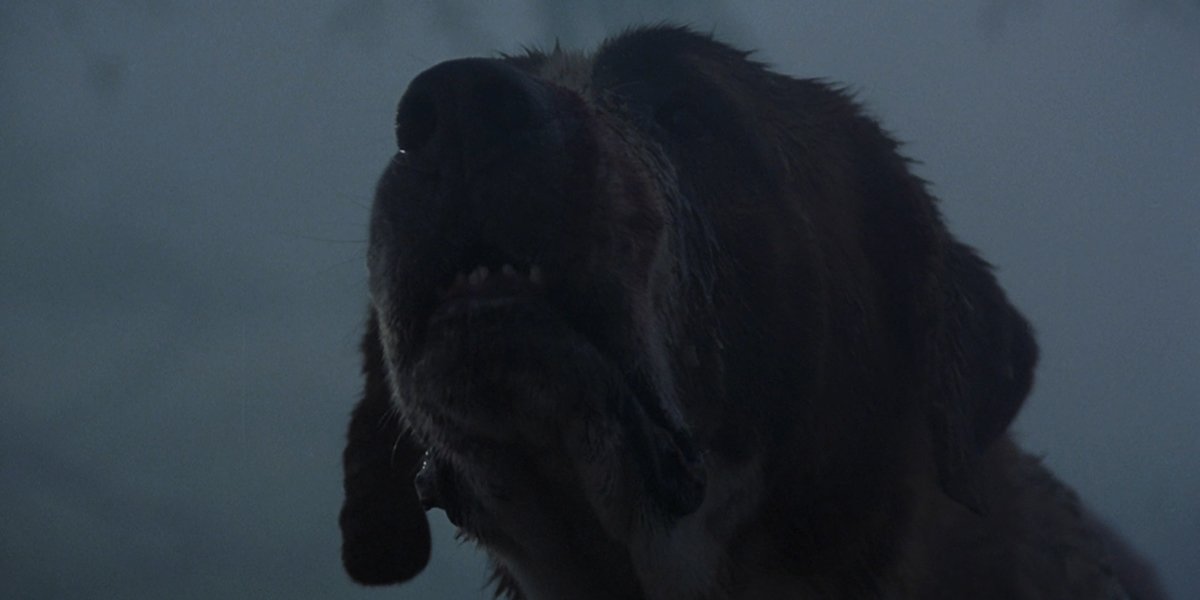
Is It Worthy Of The King?
Assessing the quality of Lewis Teague’s Cujo as an adaptation begins with the ending, as it’s an alteration that changes the tenor of the entire work. Regardless of whether or not you know what’s coming, the final pages of the novel provide gut punch after gut punch, and the truth is that it forever changes the way you read Stephen King. When you know how far he is willing to go as a storyteller and the lines he is willing to cross, anything feels on the table, and the effect that has on the stakes in his books is remarkable.
Most importantly, though, it’s a conclusion that fits the novel King aimed to write. This is a story where Donna Trenton hangs all of her hopes on the arrival of the mailman, but then said mailman doesn’t come because of a vacation hold that has been put on the garage’s post. This is a story where Donna leaves a note for seemingly nobody about bringing the Pinto to the Cambers’ (after all, Vic isn’t home), but then her ex-lover callously destroys it while getting some revenge. And then when Vic does finally get back and realizes something is wrong, he is too focused on the affair to see the situation clearly. It’s a mean book that is properly fit with a mean ending.
In contrast, the movie adaptation concludes wearing a muzzle, and while that was Stephen King’s choice, there is no questioning that it mutes the impact of Cujo when the two versions are compared side-by-side. And even if you remove the fate of Tad from the equation, there are still other questionable decisions that deserve to be called out – namely the spectacularly dumb moment when the rabid dog comes back to life for one last strike after crashing through the kitchen window, only to be shot down by Donna with Sheriff Bannerman’s revolver.
Does this mean that a remake would be warranted, provided it was willing to go the whole nine yards bringing the original ending into live-action? The answer is a firm “no,” and the reason is because just about every other aspect of Cujo has held up remarkably. Structurally speaking, the movie is 49 minutes of setup followed by about 40 minutes of climax, and it’s an excellent effort of character building that gets the audience invested in the fates of the protagonists before putting them through hell (the studio tried to trim 15 minutes out of the first half of the film during post-production, but responses from test screenings clearly demonstrated a willingness to spend time in the world before the chaos begins). And when the action does start, the story makes your heart repeatedly rise and fall as Donna and Tad glimpse safety only to see it torn away.
There is also a special cinematic magic in Cujo that deserves to be preserved rather than replicated. Young Danny Pintauro, who couldn’t actually read at the time the movie was made and had to be taught all of his lines, delivers a startling and haunting turn as Tad, as you feel every ounce of his pain and terror (the moments when he is having his asthma attacks or screaming and cowering when the dog gets in the car are unforgettable).
And then there is the genius animal work. There were 11 different St. Bernards that were used on the set of Cujo, each of them possessing a different skill, and the action that the movie is able to capture is unreal (well, except for the very real moment when Dee Wallace’s face was bitten and she required eight stitches). It’s sincerely difficult to imagine any modern studio greenlighting a remake to be made with the same techniques, and we just don’t need a version brought to life with liberal usage of visual effects.
Cujo is very much a Hollywood version of the Stephen King story, but it’s as faithful as adaptations get beyond that concession, and deserves to continue being held up as a horror classic.
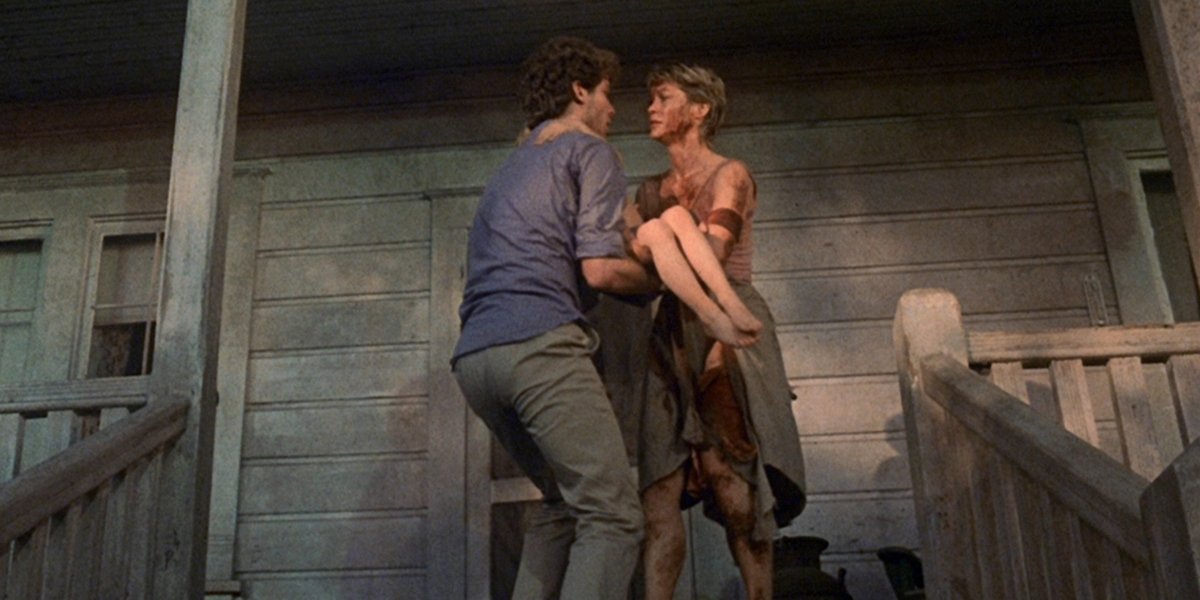
How To Watch Lewis Teague’s Cujo
If you now find yourself ready to dig into Lewis Teague’s Cujo with a whole new perspective on the material, the great news is that it’s a movie that is incredibly easy to load up in just a couple minutes. In addition to being widely available on Blu-ray and DVD (all domestic editions featuring a wonderful director’s commentary track packed with behind-the-scenes stories), it’s also available for digital rental and/or purchase from all major online outlets. As for streaming, if you currently have a subscription to Philo you can boot up the film right now and start watching.
Looking ahead, I’ll be extending my stay in Castle Rock, Maine for a while as my next Adapting Stephen King piece will explore the psychic adventures of Christopher Walken’s Johnny Smith in David Cronenberg’s The Dead Zone. Look for it up on CinemaBlend come Wednesday, and click on the banners below to discover the previous installments of this column while you wait!







Eric Eisenberg is the Assistant Managing Editor at CinemaBlend. After graduating Boston University and earning a bachelor’s degree in journalism, he took a part-time job as a staff writer for CinemaBlend, and after six months was offered the opportunity to move to Los Angeles and take on a newly created West Coast Editor position. Over a decade later, he's continuing to advance his interests and expertise. In addition to conducting filmmaker interviews and contributing to the news and feature content of the site, Eric also oversees the Movie Reviews section, writes the the weekend box office report (published Sundays), and is the site's resident Stephen King expert. He has two King-related columns.
